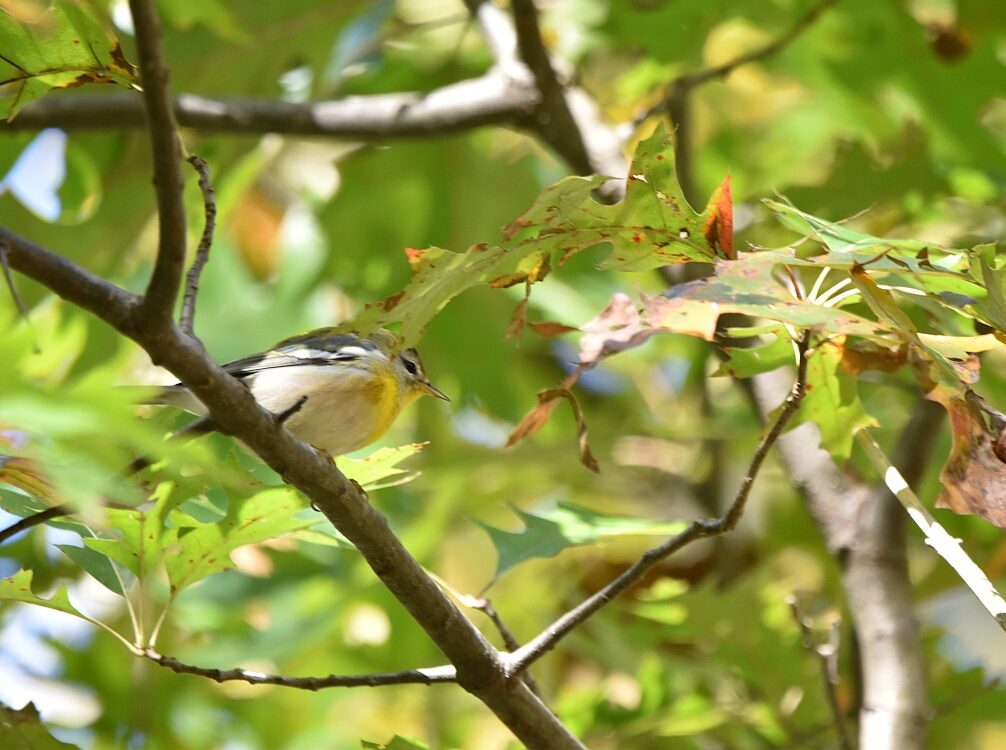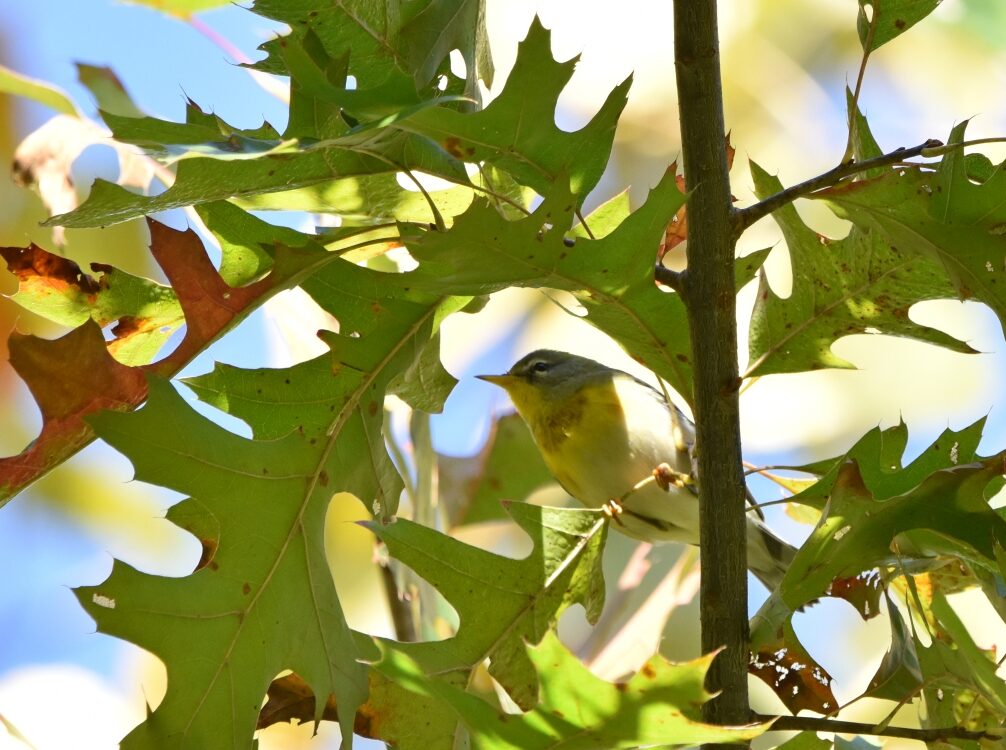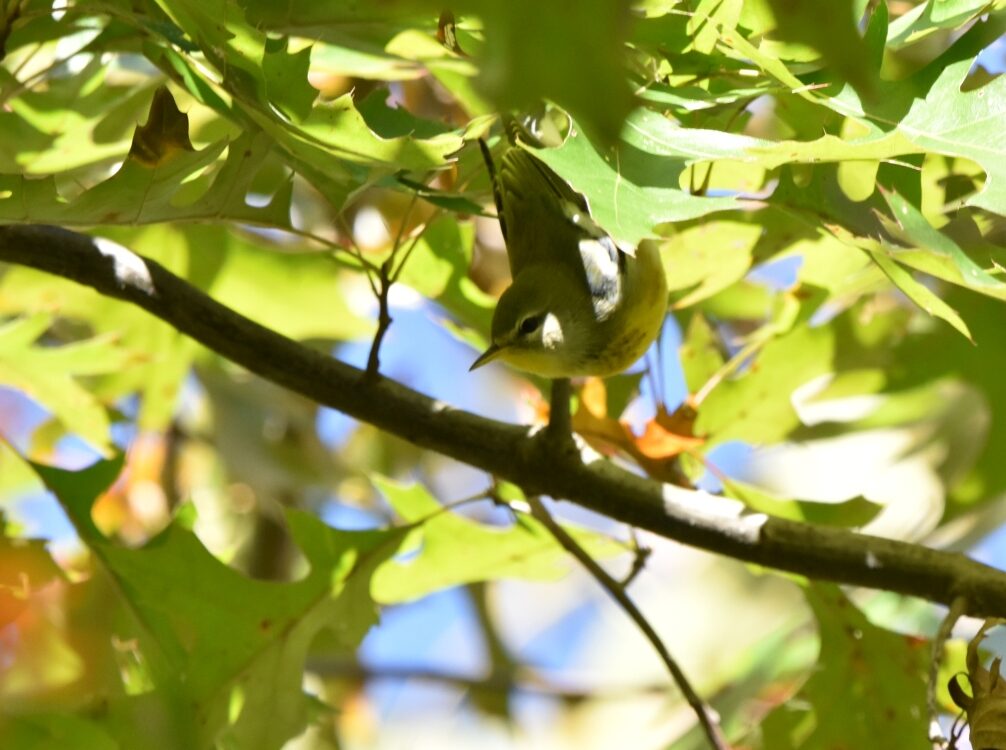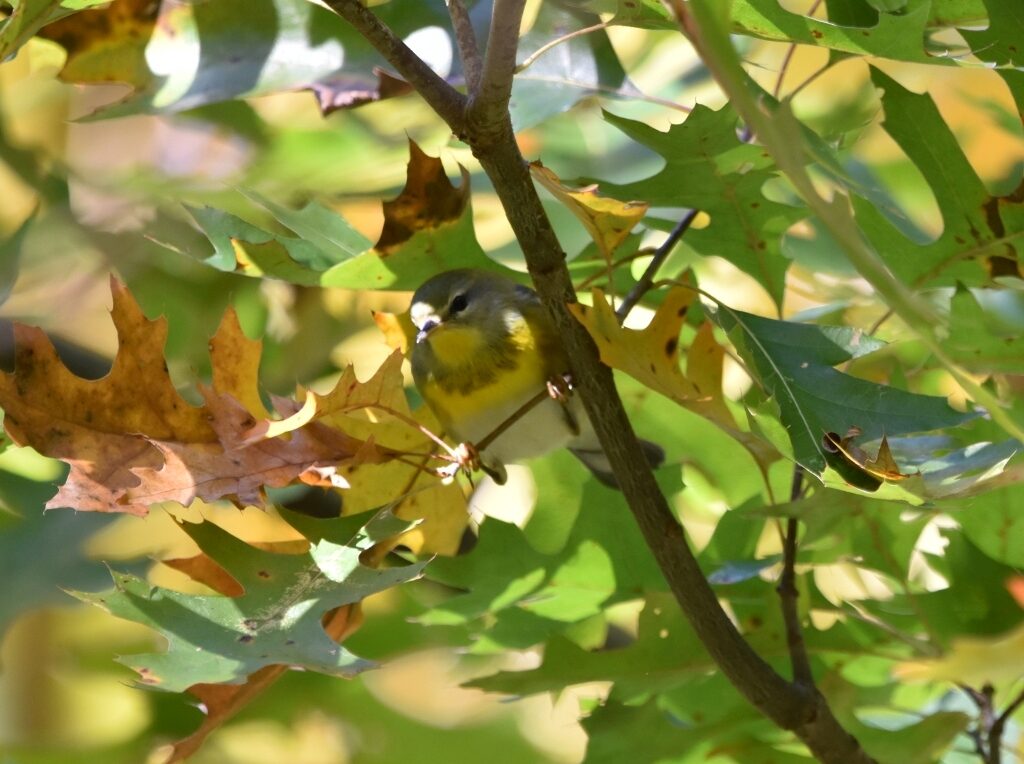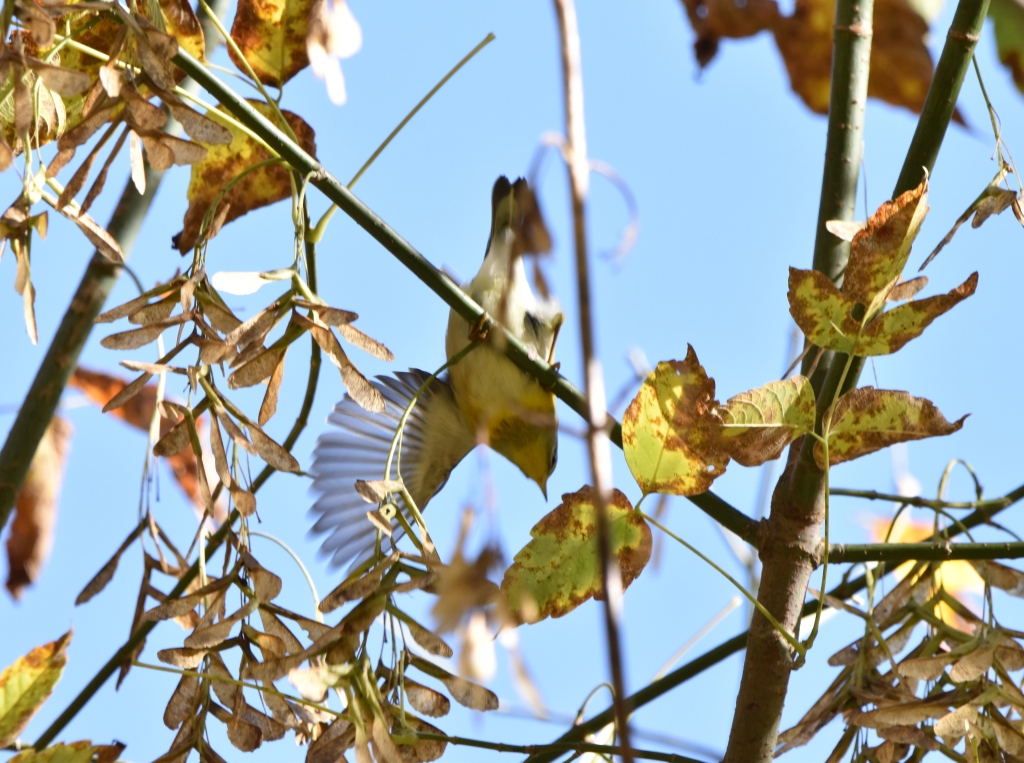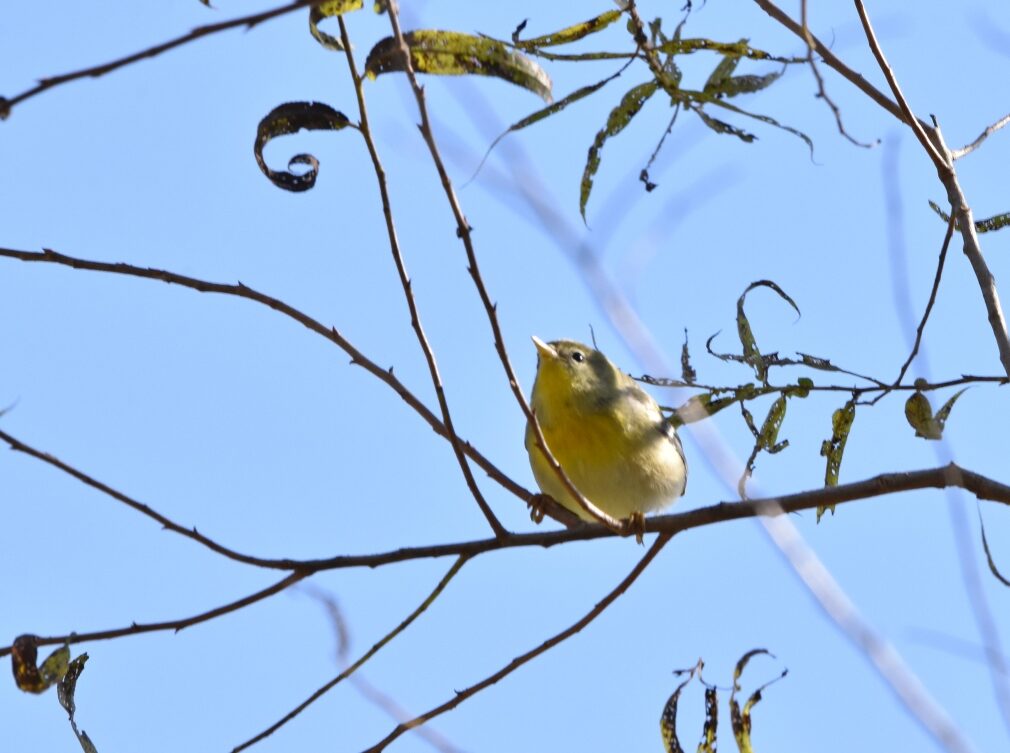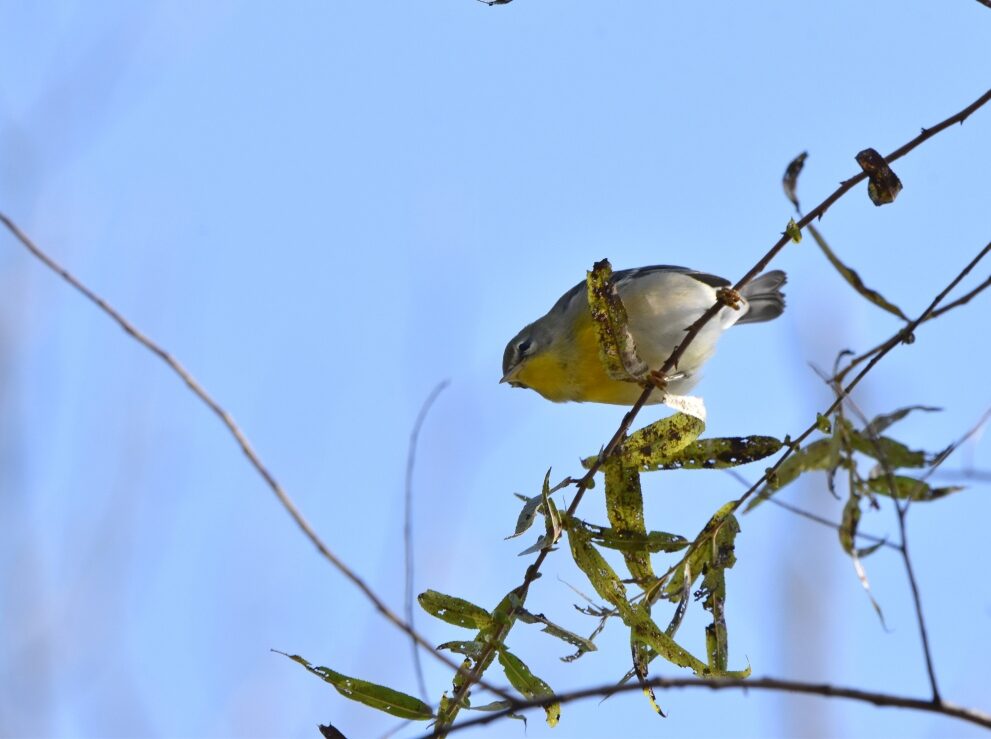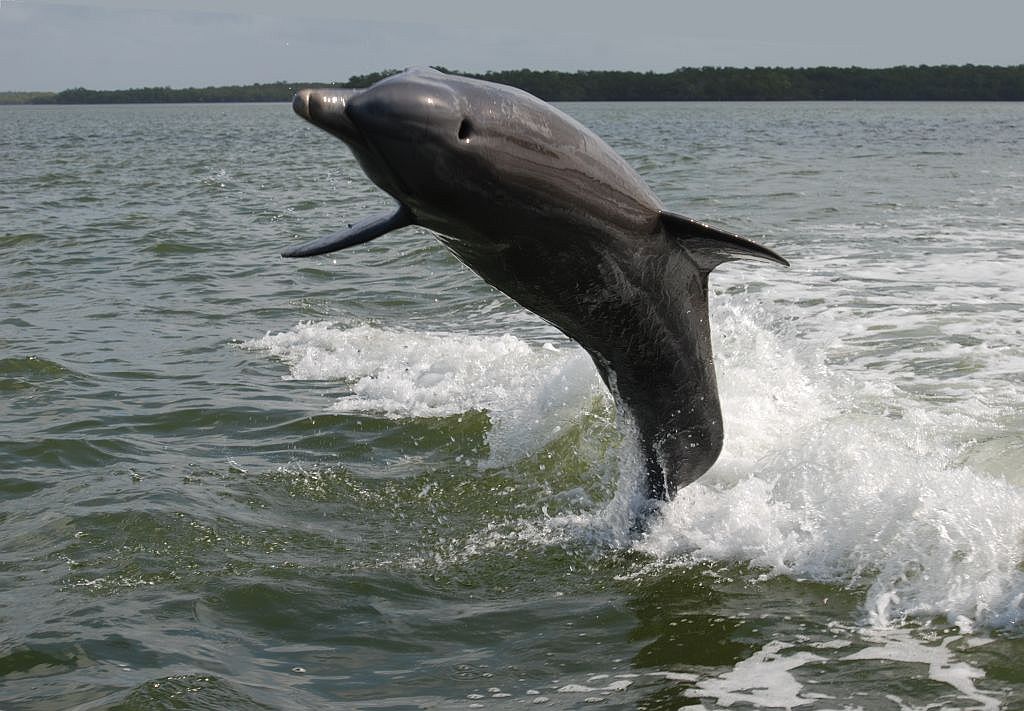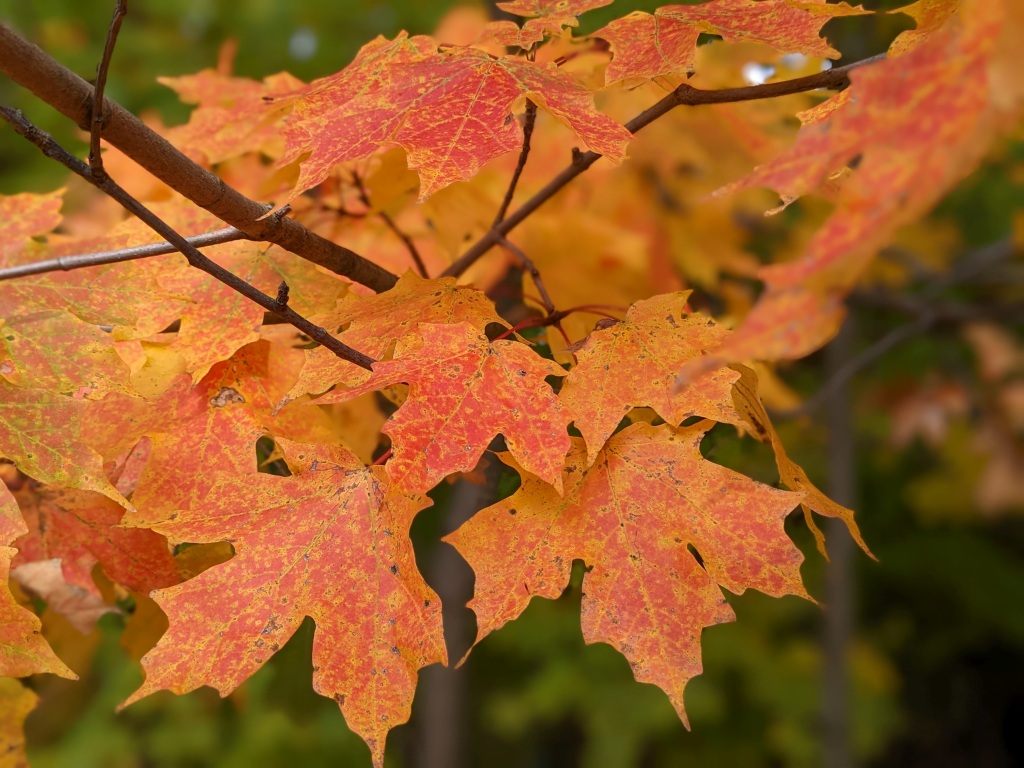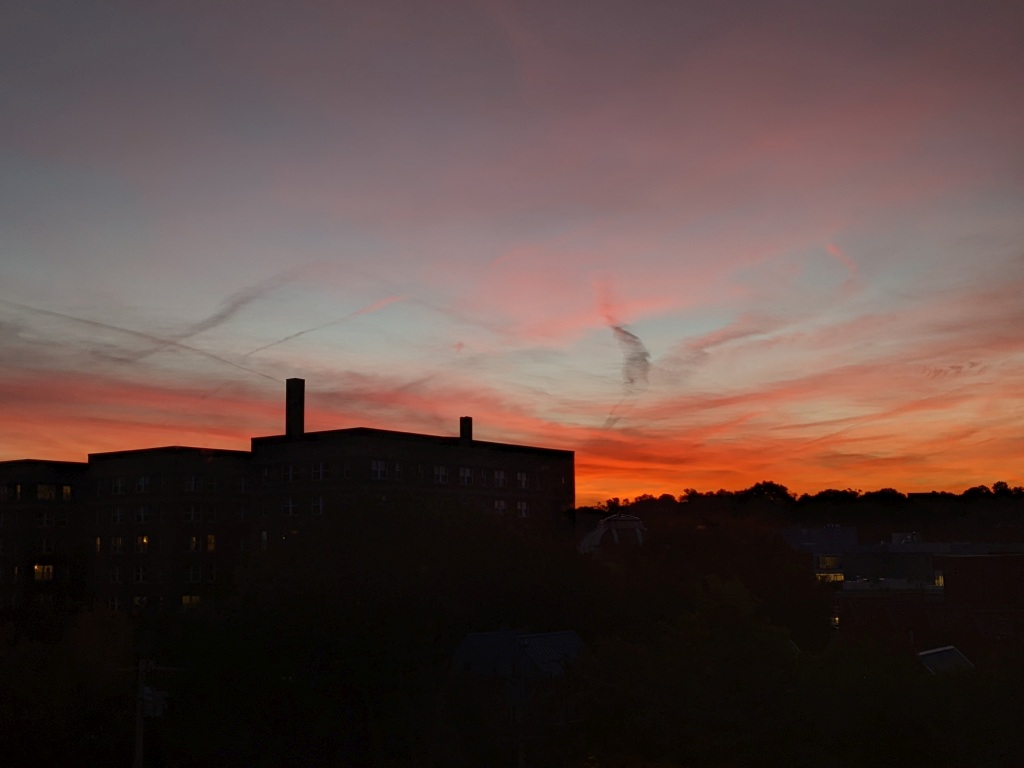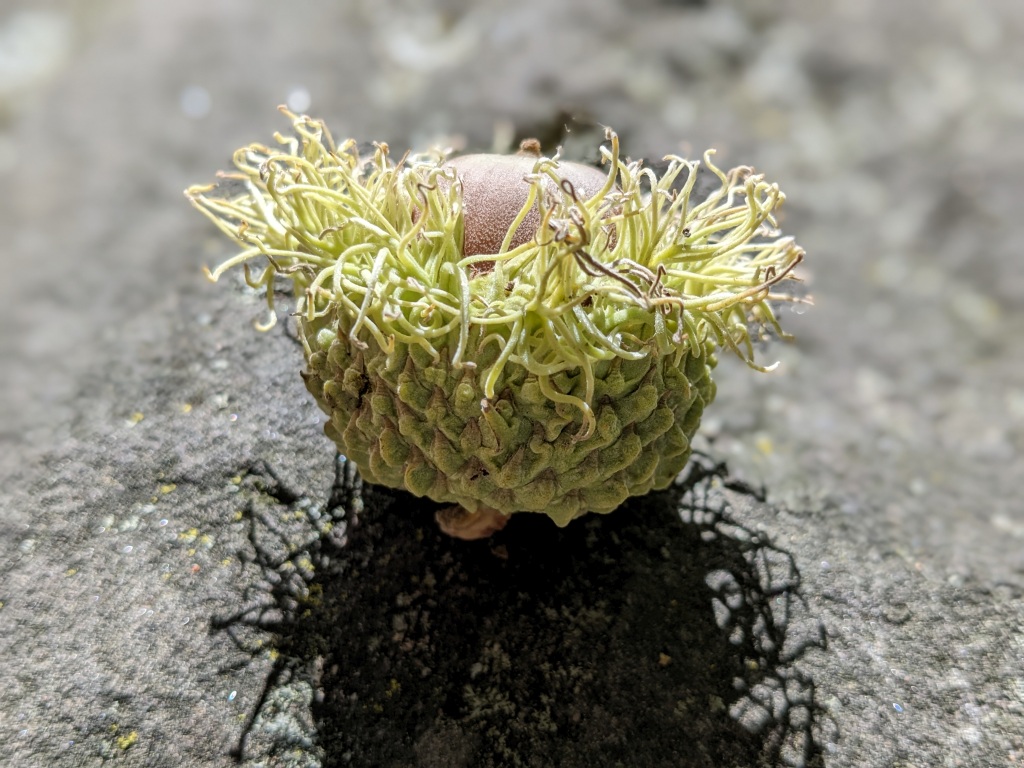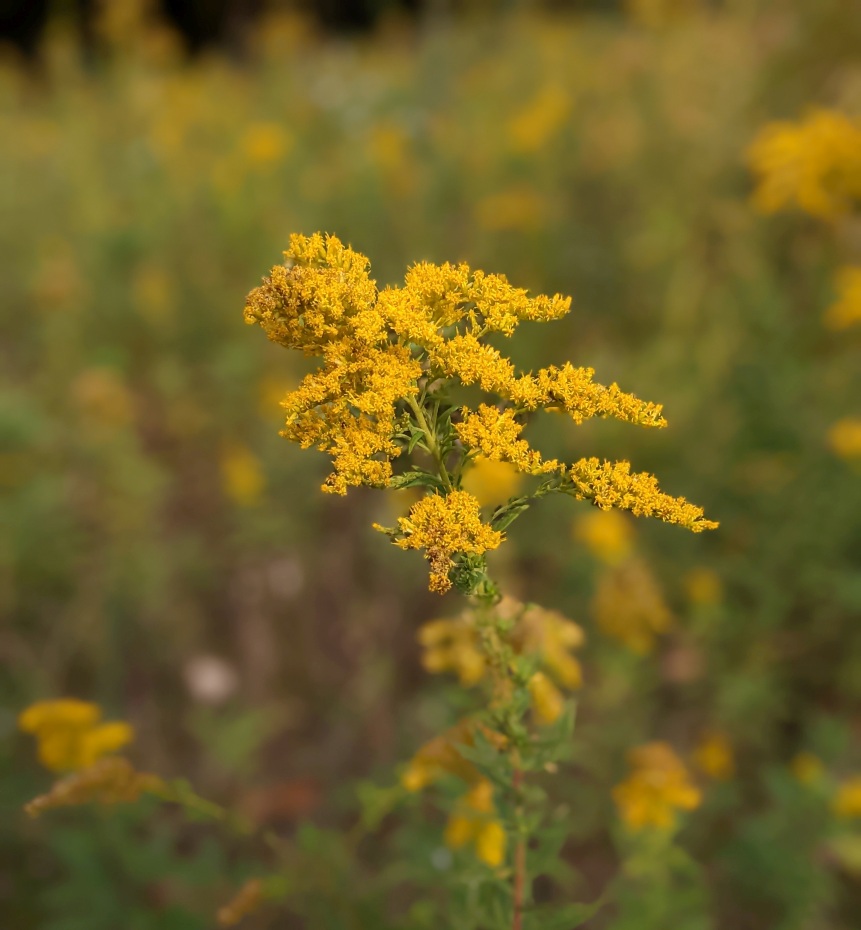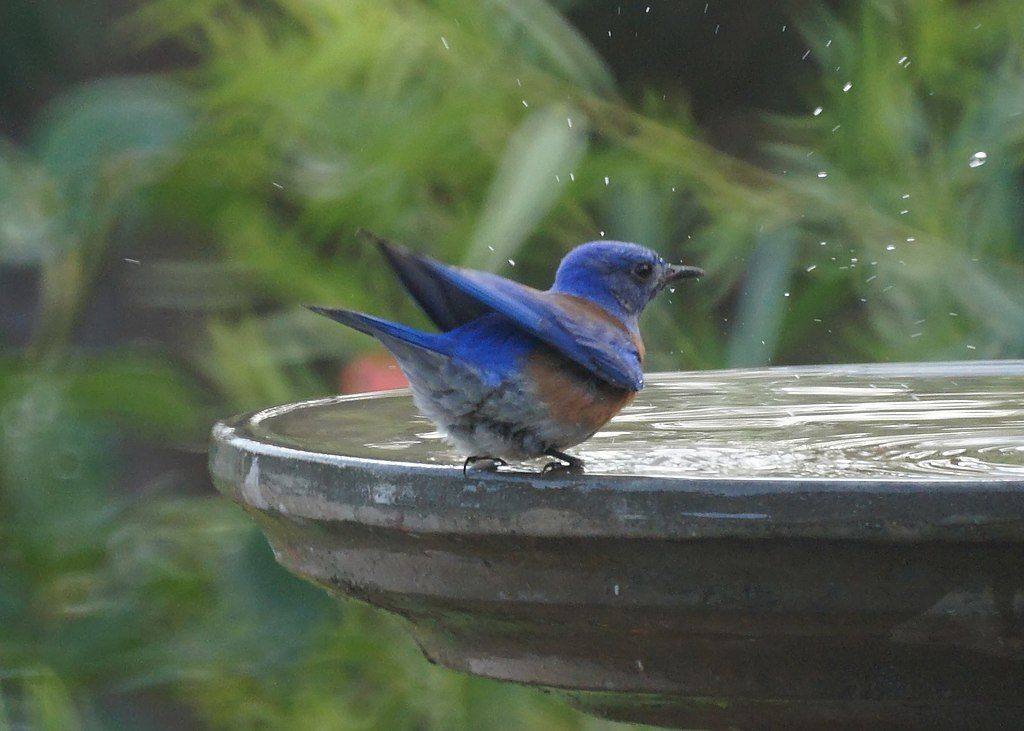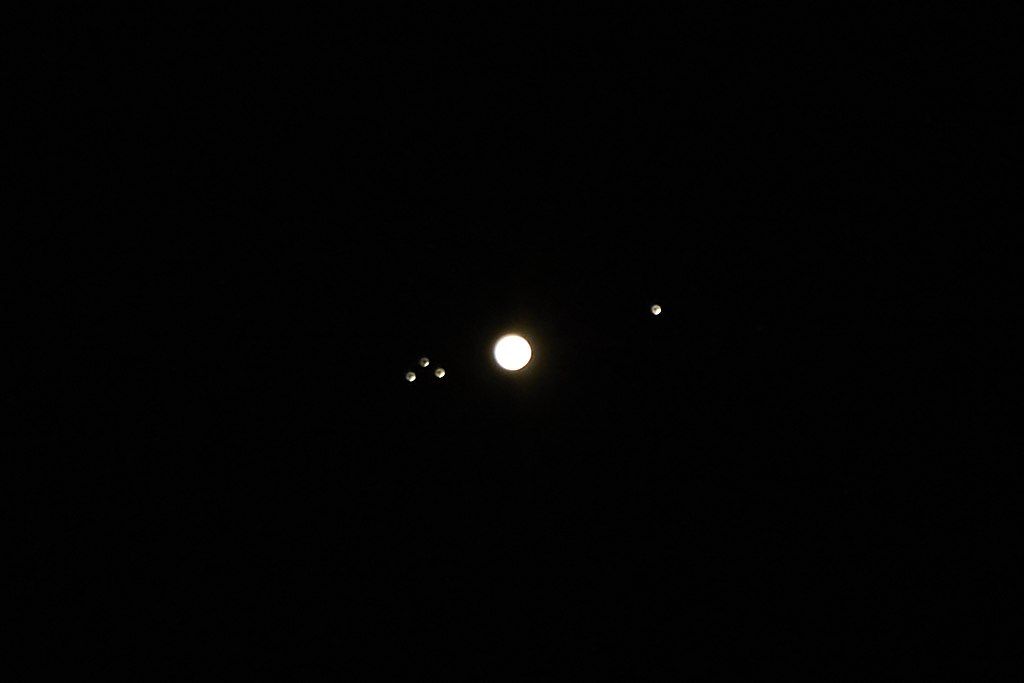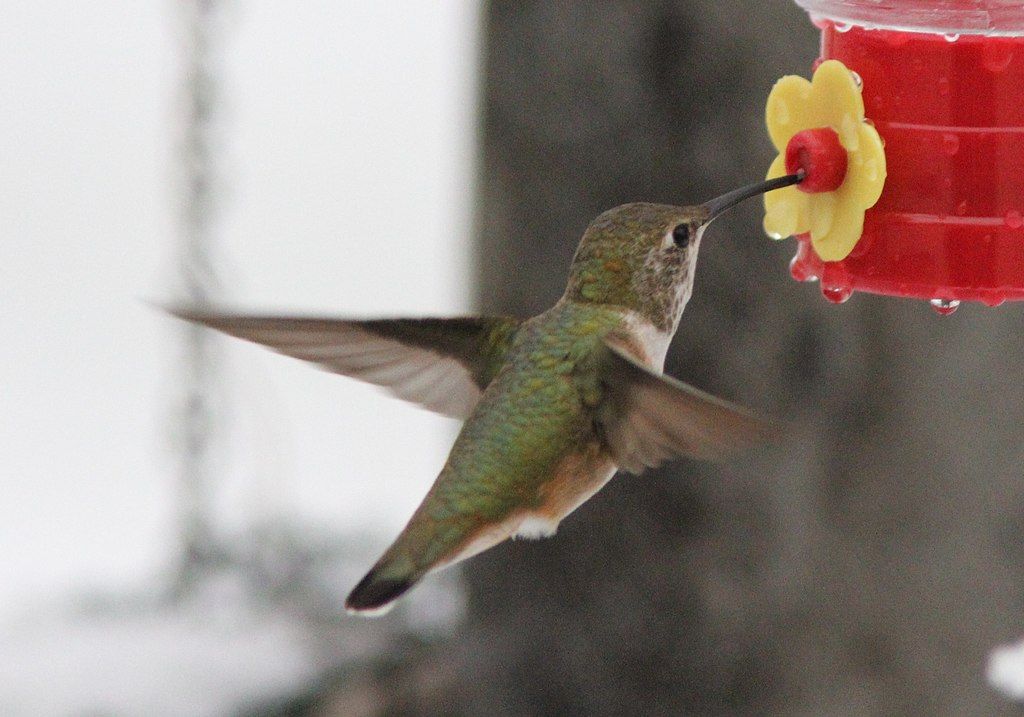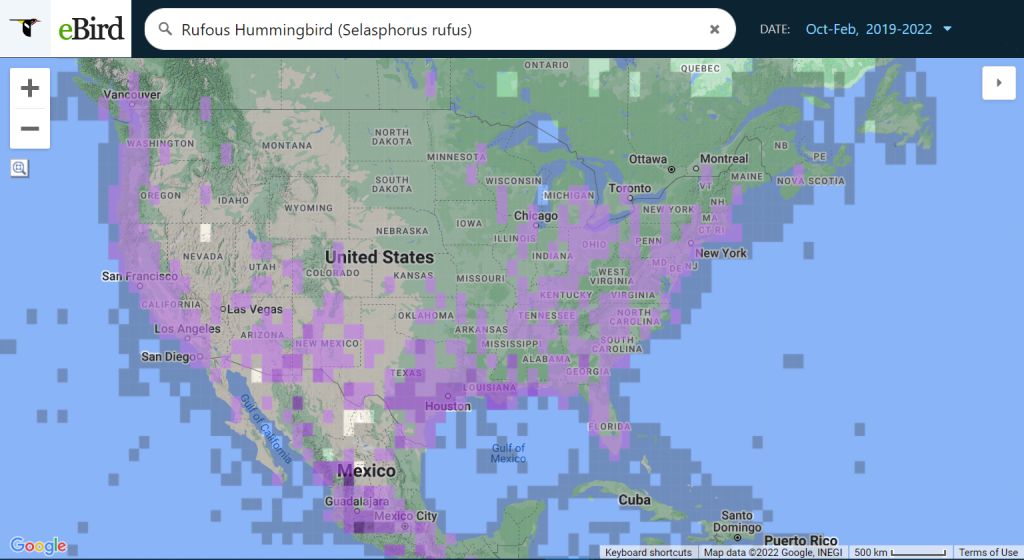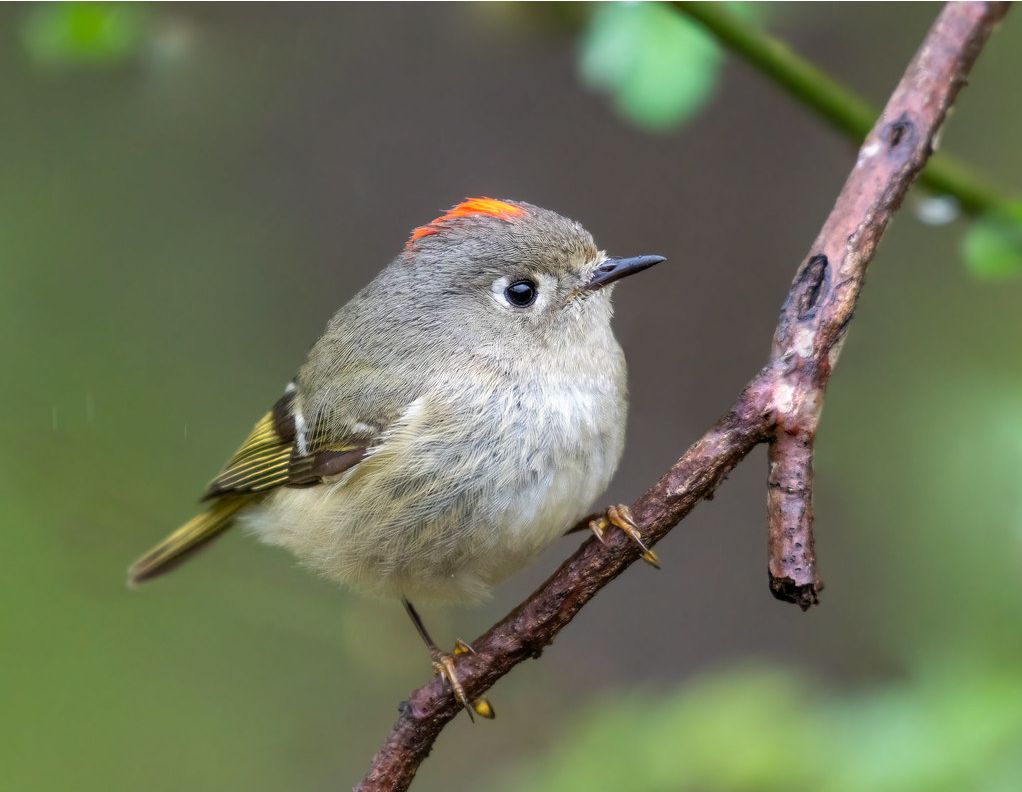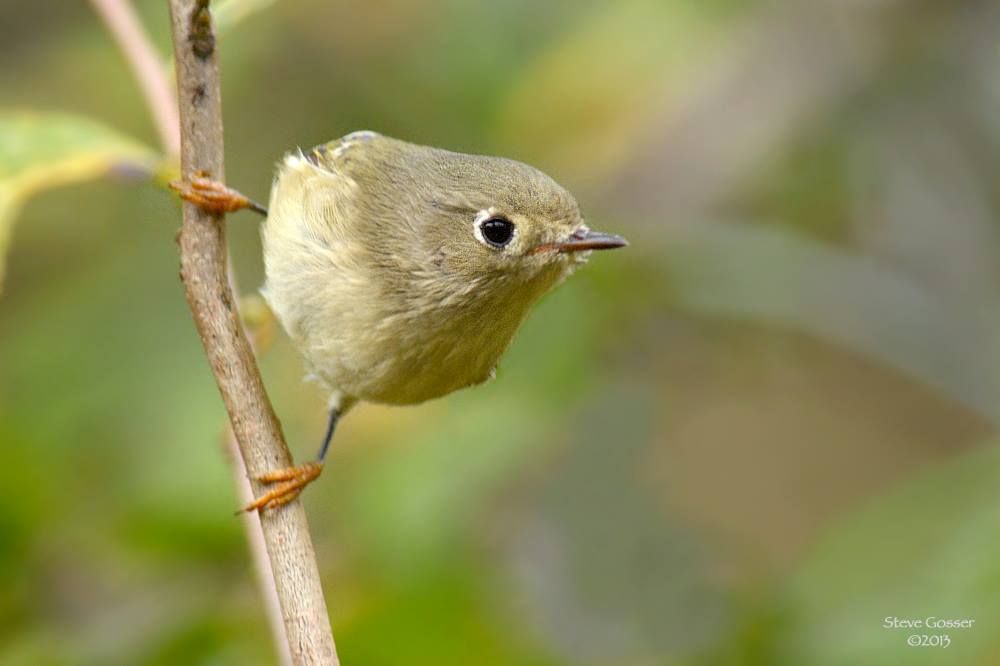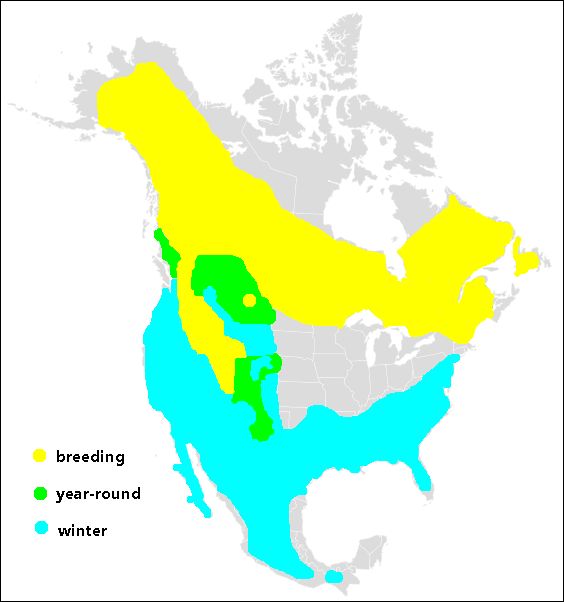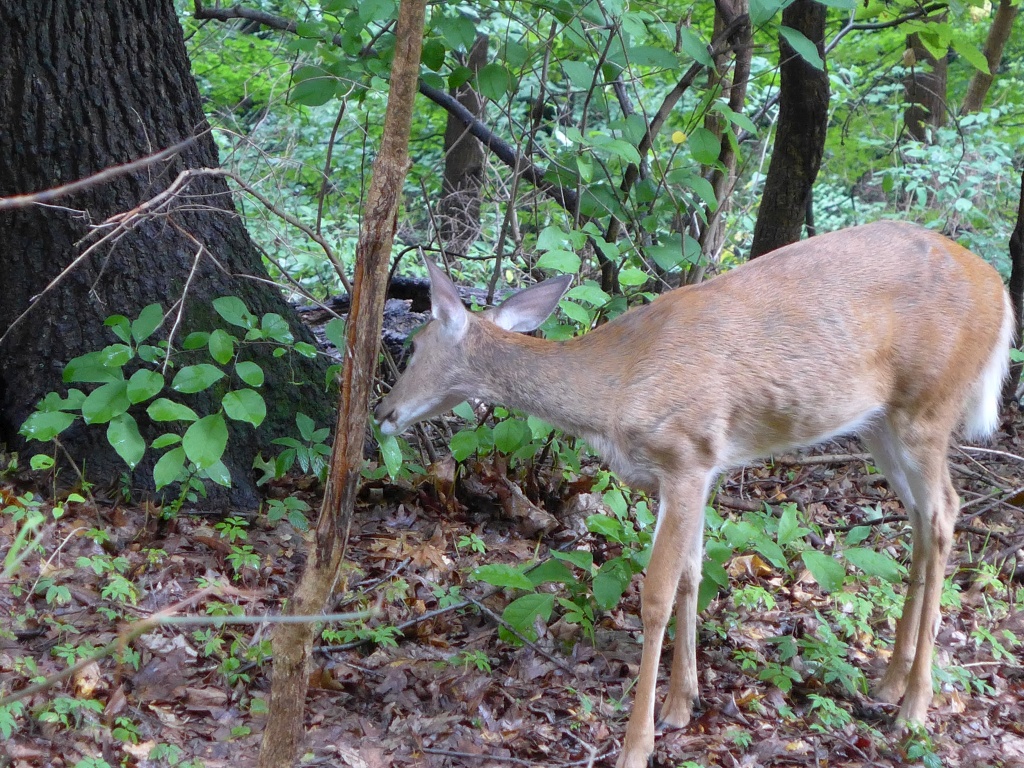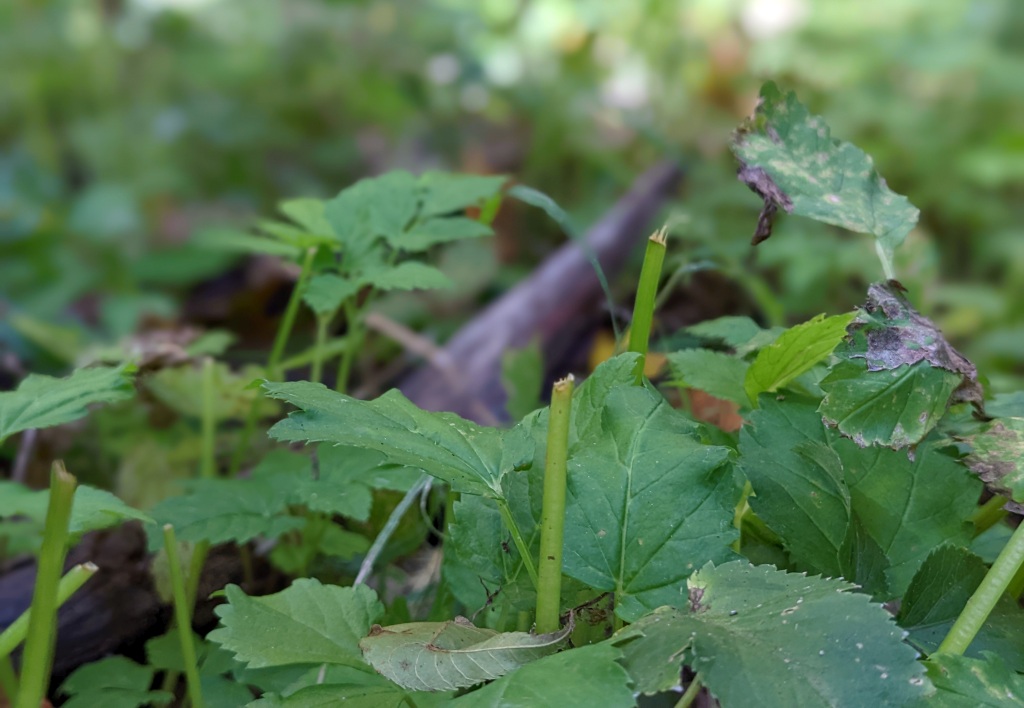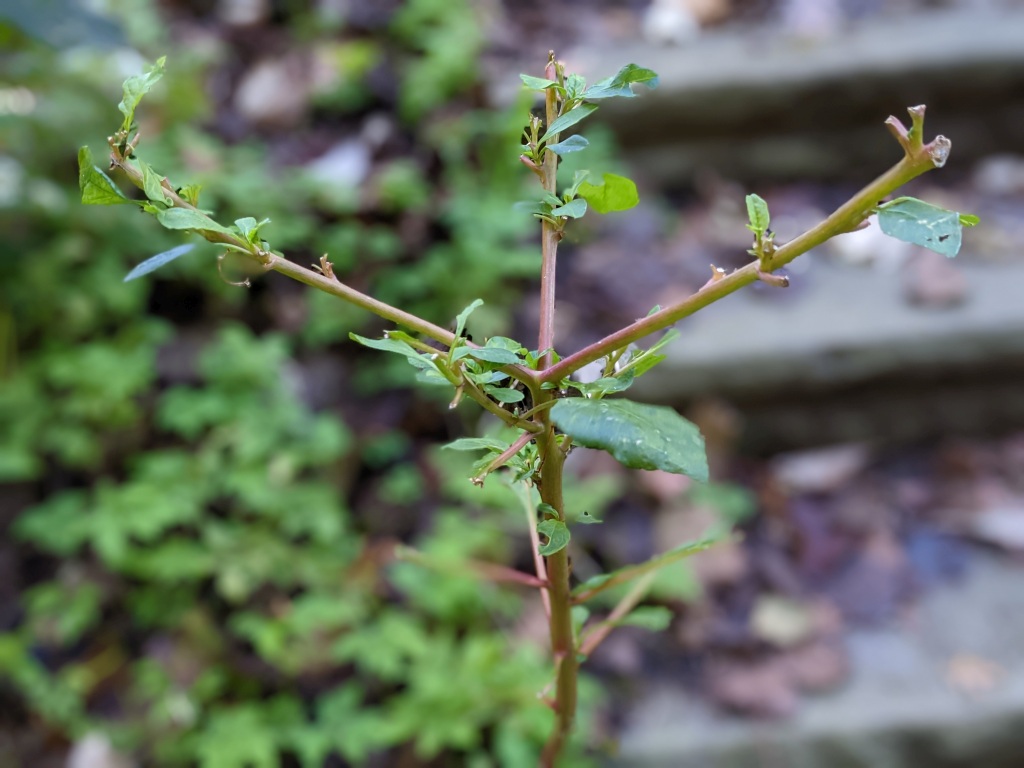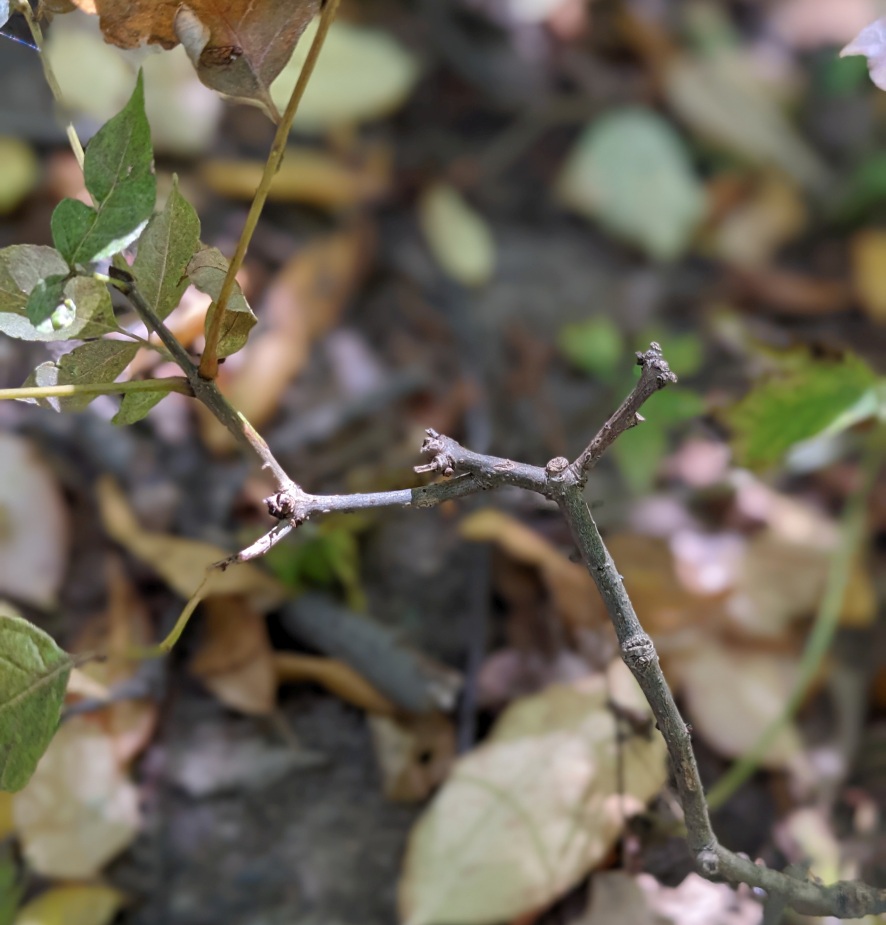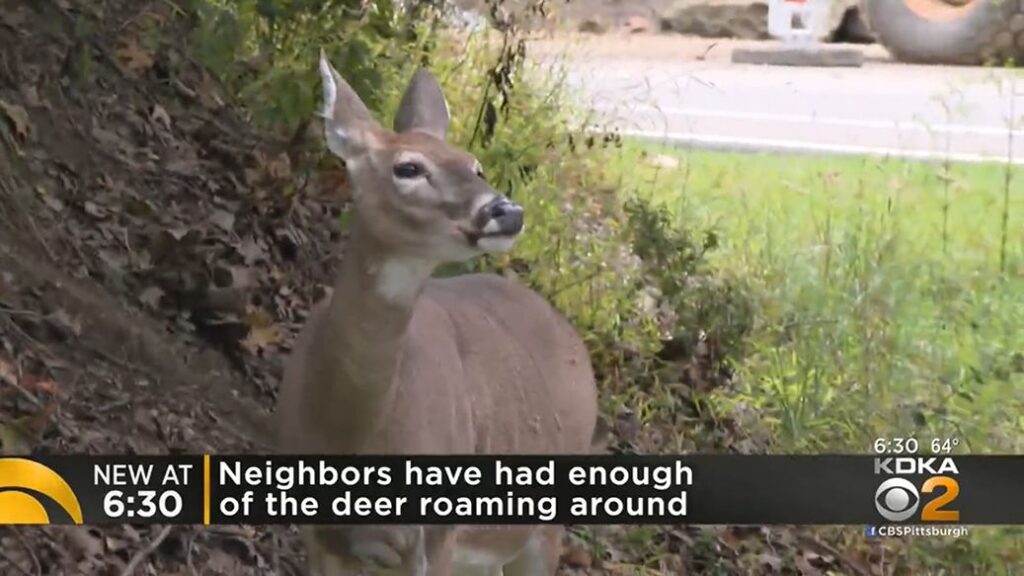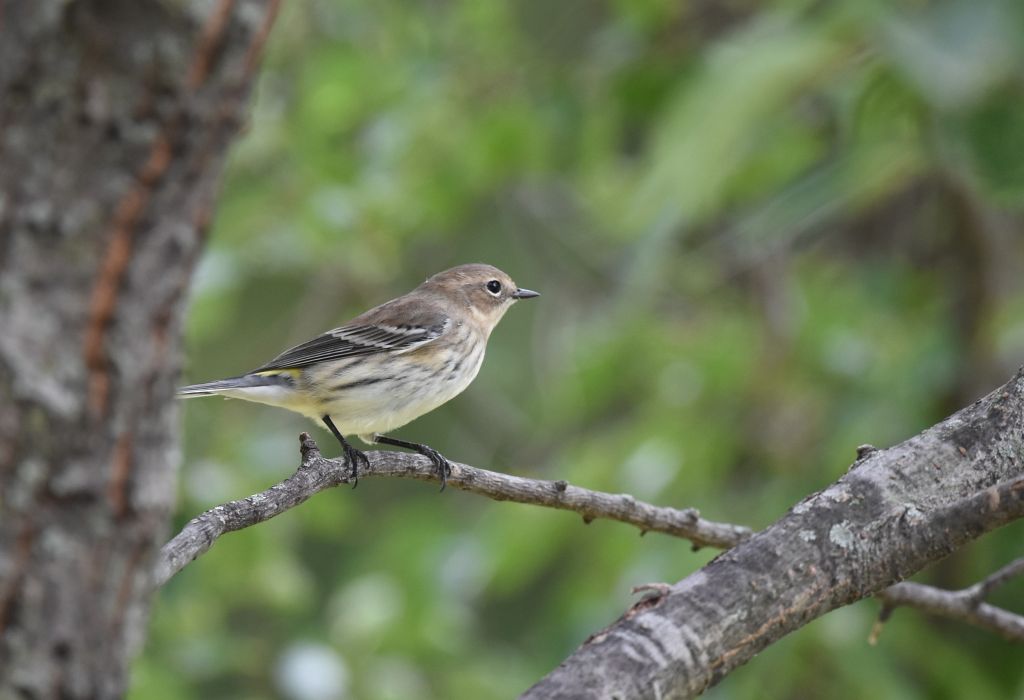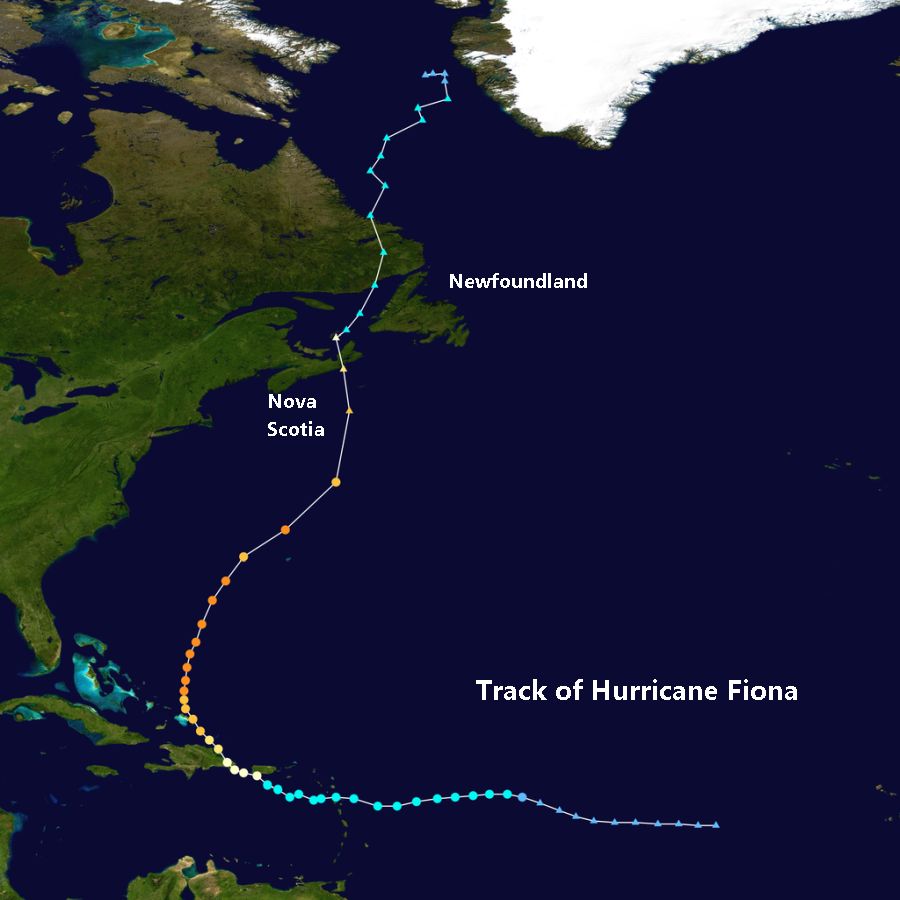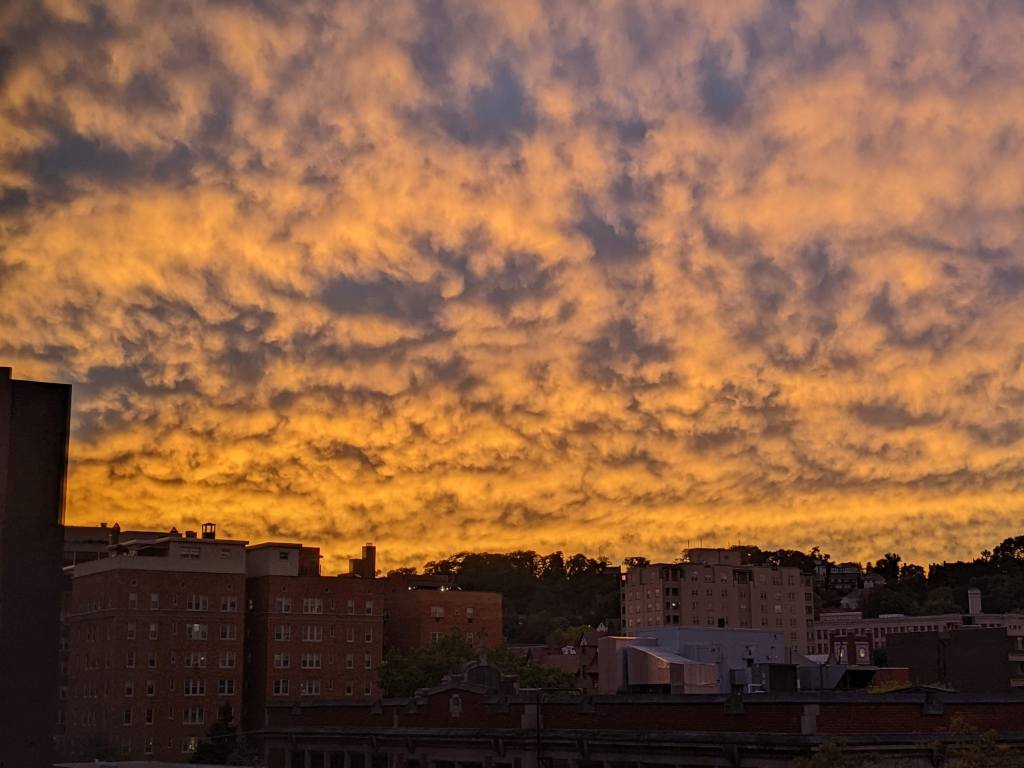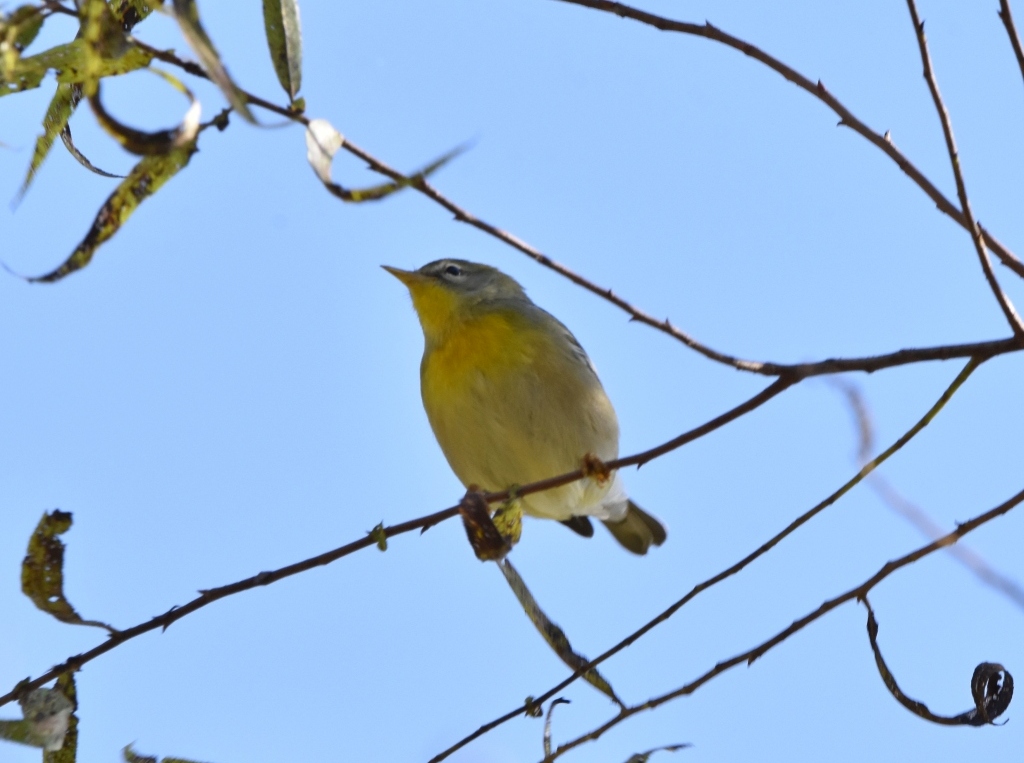
17 October 2022
In just two days the mix of songbirds at Frick Park changed from warblers to thrushes and sparrows.
On Friday 14 October Charity Kheshgi and I found three northern parulas (Setophaga americana) along Nine Mile Run at Frick Park. eBird said they were worthy of a Rare Bird Alert. Fortunately Charity got photos of all three, shown in the slideshow below with three photos of each. Two of them are very easy to tell apart because they are at the extremes of bright vs. pale colors.
On Saturday night migration was intense which often means that all the birds leave Pittsburgh. Instead, on chilly Sunday morning we found a new mix of songbirds including those pictured below.
- Blue-headed vireo (Vireo solitarius)
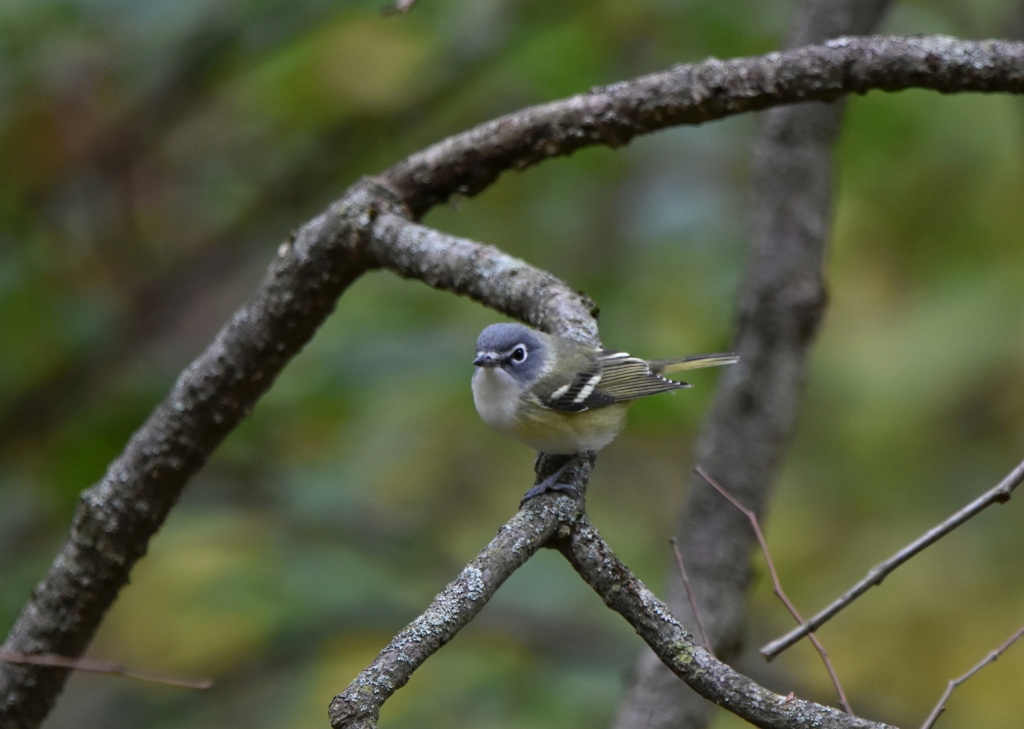
- Golden-crowned kinglets (Regulus satrapa)
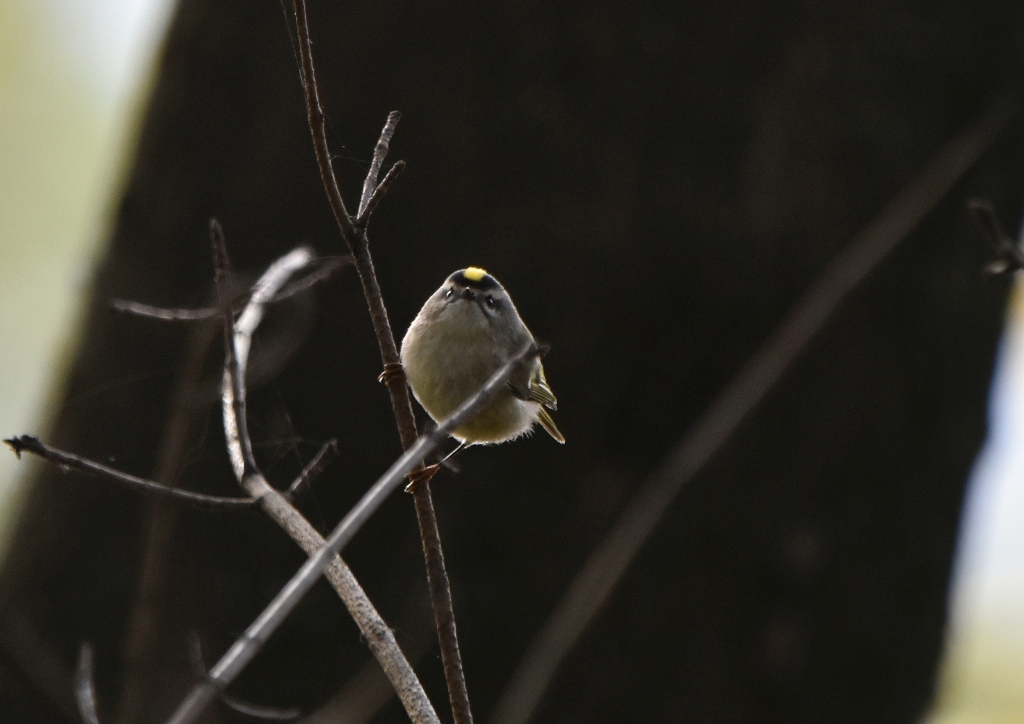
- Thrushes including hermit thrushes (Catharus guttatus), a veery (Catharus fuscescens, no photo), and …
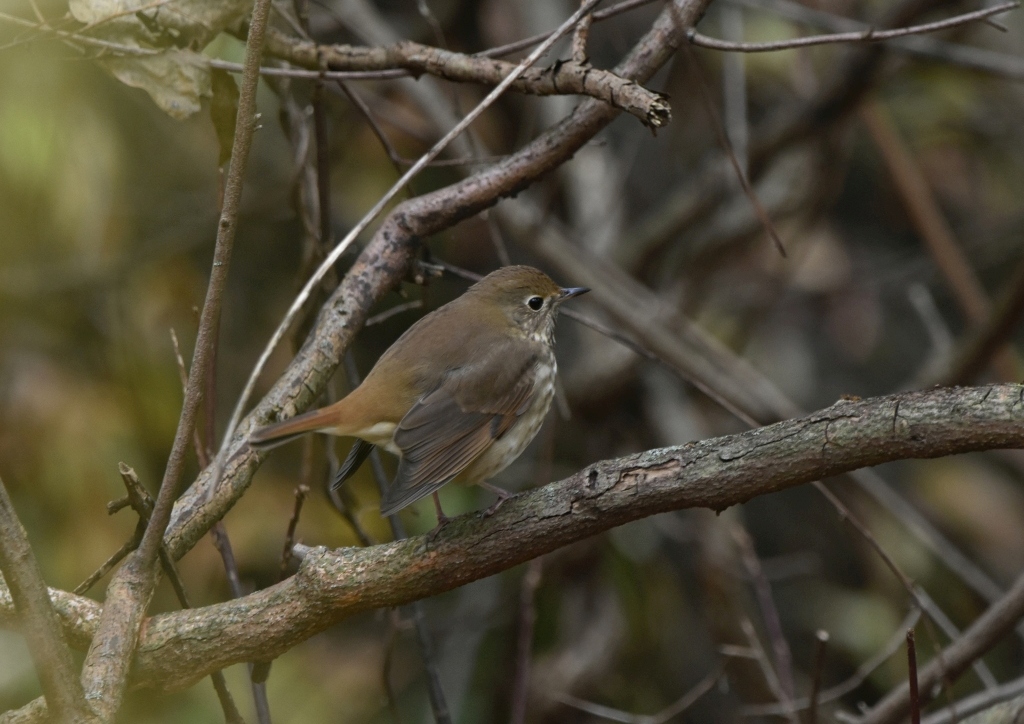
- Gray-cheeked thrush (Catharus minimus)
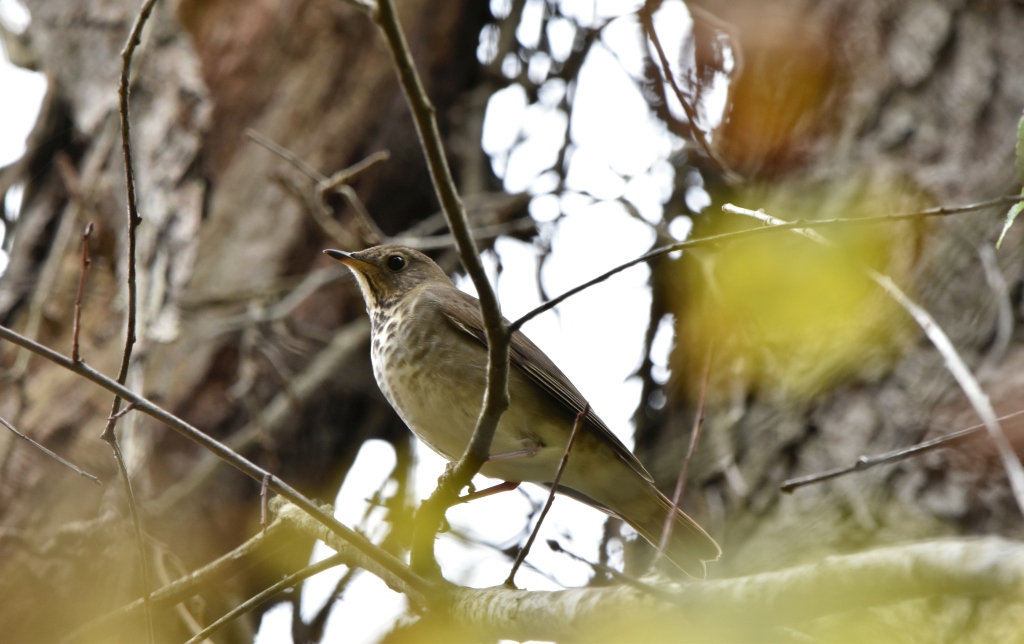
There were many more American robins [50 instead of 7] and white-thoated sparrows (Zonotrichia albicollis) [36 instead of none] and we even heard a fox sparrow (Passerella iliaca) (example below). I wish we could have seen it.
Meanwhile we’re still waiting for dark-eyed juncos but not the snow that comes with them.
(photos by Charity Kheshgi)
